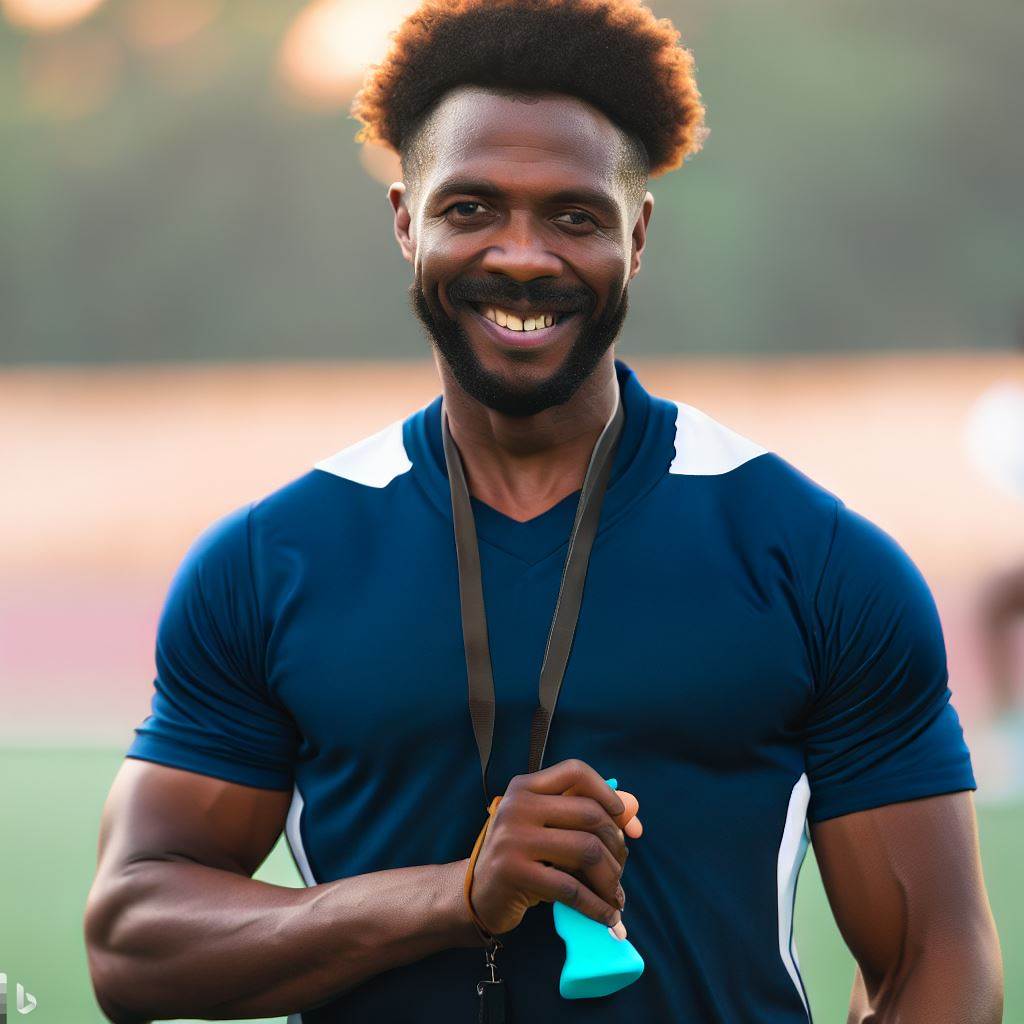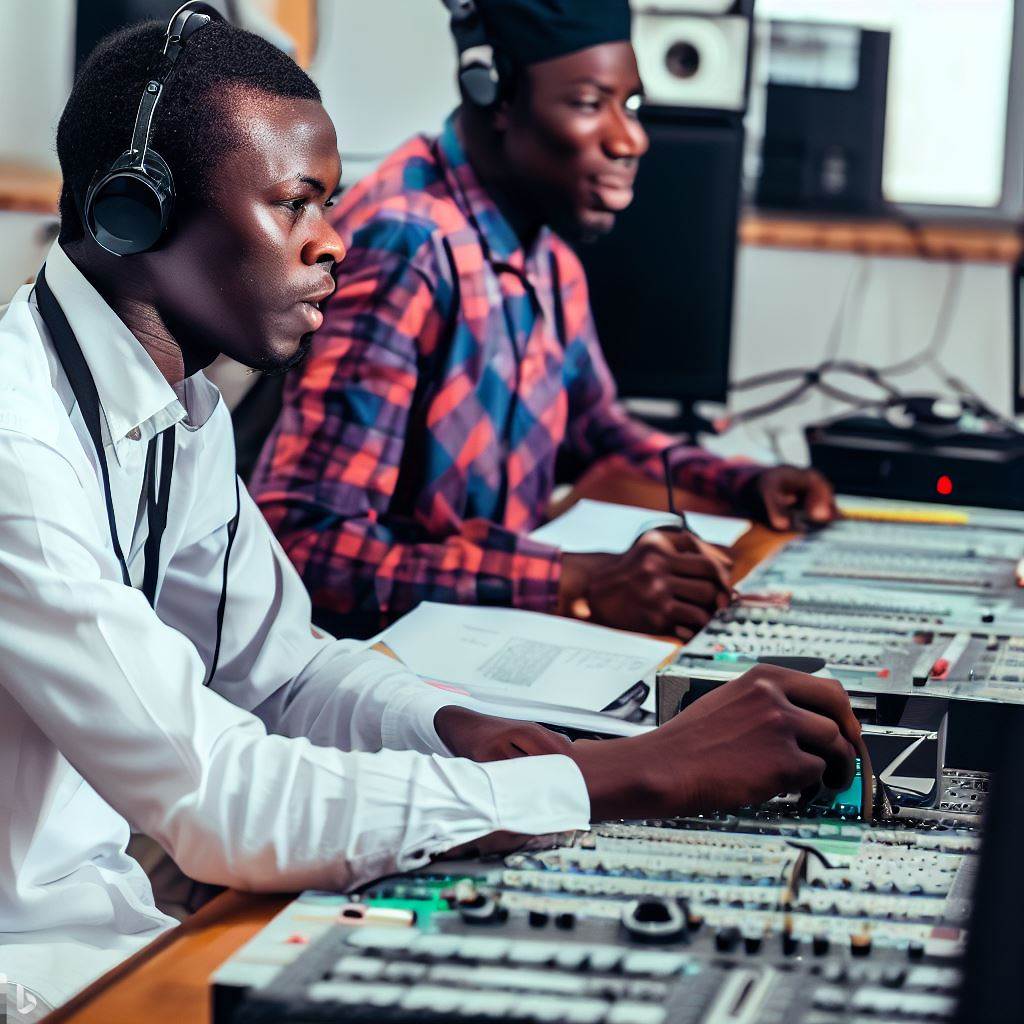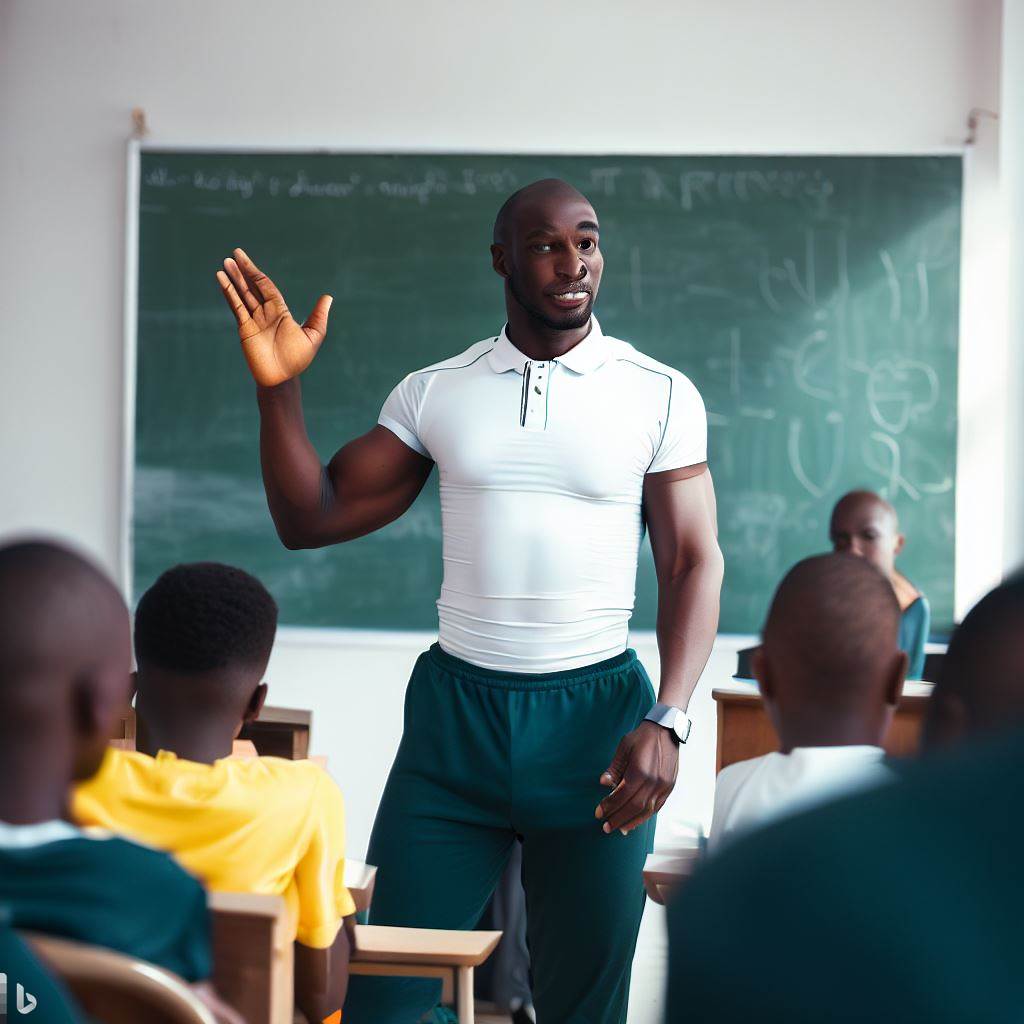Introduction
- Athletic training, a vital field in sports, involves preventing, treating, and rehabilitating injuries among athletes.
- In Nigeria, where sports hold immense importance, staying abreast of trends and innovations is crucial for success.
- This section underscores the significance of staying updated on the latest trends and innovations in athletic training.
In the dynamic world of sports, athletic training plays a pivotal role in ensuring athletes’ peak performance and well-being.
This field encompasses various aspects, from injury prevention to rehabilitation, nutrition, and mental conditioning.
Nigeria, with its rich sporting culture and emerging talents, places a premium on athletic performance.
As the world of sports continuously evolves, staying informed about the latest trends and innovations becomes imperative.
To excel in athletic training, it’s vital to embrace innovation and keep pace with evolving methodologies, technologies, and research findings.
This not only enhances an athlete’s performance but also minimizes the risk of injuries.
In this section, we’ll explore the ever-evolving landscape of athletic training in Nigeria, highlighting the importance of staying updated on the latest trends and innovations.
We’ll delve into cutting-edge techniques, emerging technologies, and the profound impact they have on athletes’ lives and the nation’s sports scene.
Historical Background of Athletic Training in Nigeria
Beginning of Organized Sports and Athletic Training in Nigeria
The history of athletic training in Nigeria dates back to the early 20th century when organized sports started gaining popularity.
Growth and Development of Athletic Training
Over the years, athletic training in Nigeria has witnessed significant growth and development. It has become more organized and structured.
Challenges Faced in the Past and the Need for Continuous Improvement
In the past, athletic training in Nigeria faced numerous challenges such as limited resources, lack of proper facilities, and outdated techniques.
However, these challenges have spurred the need for continuous improvement.
Read: Rural vs Urban Athletic Training in Nigeria: A Comparison
Current State of Athletic Training in Nigeria
The current state of athletic training in Nigeria requires careful analysis and evaluation.
The existing programs and facilities need to be thoroughly assessed to identify areas that need improvement.
Critically analyzing the strengths and weaknesses of the current systems is essential in order to develop better training methods.
Efforts should be made to evaluate the effectiveness and efficiency of the current training methods.
This evaluation will help determine if the methods in place are achieving the desired results.
Additionally, assessing the efficiency of training programs will provide insights into whether they are cost-effective and utilize resources optimally.
It is crucial for Nigeria to adapt to modern trends and innovations in athletic training.
Keeping up with these trends will significantly enhance the effectiveness of training programs.
Incorporating new innovations and techniques into the training process will improve efficiency and help Nigerian athletes reach their full potential.
By staying updated on trends and innovations, Nigeria can ensure its athletes remain competitive on the global stage.
Embracing new training methods and technologies will give Nigerian athletes a competitive edge and help them excel in international competitions.
In short, the current state of athletic training in Nigeria requires careful analysis, evaluation, and adaptation to modern trends and innovations.
By continuously assessing and improving training programs and facilities, Nigeria can develop athletes who can compete at the highest level globally.
Read: Ethics and Standards in Sports Information in Nigeria
Trends and Innovations in Athletic Training in Nigeria
Various trends and innovations in athletic training
1. Rise of specialized training programs
Specialized training programs have gained popularity, focusing on specific sports and individual athlete needs.
2. Emphasis on injury prevention
Athletic trainers now prioritize injury prevention by designing personalized training plans and implementing proper technique.
3. Integration of functional training
Functional training, which mimics real-life movements, has been introduced to enhance an athlete’s performance and reduce injuries.
4. Adoption of sports-specific nutrition
Athletes are now understanding the significance of fueling their bodies with sports-specific nutrition plans for optimal performance.
Advancements in sports medicine, such as injury prevention and rehabilitation techniques
1. Advanced diagnostic tools
Technologies like MRI and ultrasound are used for accurate diagnosis of sports-related injuries, enabling better treatment decisions.
2. Enhanced surgical techniques
Advancements in surgical procedures have facilitated quicker and more effective recovery for athletes following injuries.
3. Development of specialized rehabilitation programs
Tailored rehabilitation programs help athletes regain strength, flexibility, and mobility after injuries, reducing downtime and chances of re-injury.
4. Utilization of alternative therapies
Athletic trainers incorporate alternative therapies like acupuncture, chiropractic care, and yoga to complement traditional rehabilitation methods.
The implementation of sports science and data analysis in training and performance optimization
1. Integration of sports science principles
Athletic trainers employ scientific principles to design training programs, considering factors like physiology, biomechanics, and nutrition.
2. Data analysis for performance evaluation
Sports data analytics enable trainers to track an athlete’s progress, identify areas for improvement, and make data-driven decisions.
3. Use of wearable devices
Wearable devices, such as heart rate monitors and GPS trackers, provide real-time data for monitoring an athlete’s performance and health.
4. Implementation of video analysis
Video analysis allows trainers to closely examine an athlete’s technique, identifying areas of improvement and reducing the risk of injury.
The use of technology in athletic training, including wearable devices
1. Virtual reality training
Virtual reality technology is being incorporated into training programs, offering realistic simulations and enhancing an athlete’s cognitive skills.
2. High-speed motion analysis
High-speed cameras capture detailed movements, highlighting specific areas that require improvement in an athlete’s technique.
3. Use of robotics in rehabilitation
Robotic devices are utilized in rehabilitation programs to provide targeted assistance, aiding in muscle strengthening and coordination.
4. Online platforms and apps
Online platforms and apps provide athletes with personalized training plans, nutrition advice, and access to remote coaching.
The incorporation of mental health techniques for athletes’ psychological well-being
1. Introduction of sports psychology
Sports psychologists work with athletes to enhance mental resilience, develop coping mechanisms, and optimize performance under pressure.
2. Mindfulness and meditation
Athletes are encouraged to practice mindfulness and meditation techniques to improve focus, reduce anxiety, and enhance overall well-being.
3. Mental health resources and support
Athletic trainers prioritize mental health by providing athletes with access to counseling services, support groups, and stress management techniques.
4. Holistic approach towards athlete well-being
Athletic training programs now understand the importance of addressing an athlete’s mental health alongside their physical conditioning.
Lastly, athletic training in Nigeria has seen significant trends and innovations, ranging from specialized training programs to the incorporation of sports science, data analysis, technology, and mental health techniques.
These advancements aim to optimize performance, prevent injuries, and support overall athlete well-being.
Read: The Role of Women as Sports Information Directors in Nigeria

Benefits of Embracing Trends and Innovations in Athletic Training
Athletic training is a crucial aspect of sports development in Nigeria. In recent years, trends and innovations in this field have emerged, bringing about numerous benefits.
These benefits range from enhanced performance and improved results for athletes to reduced risk of injuries and faster recovery.
Additionally, embracing trends and innovations in athletic training can lead to increased competitiveness on national and international levels, as well as better opportunities for talent development and potential recruitment.
Enhanced performance and improved results for athletes
- Implementation of new training methods and techniques can greatly enhance athletes’ performance.
- By embracing trends and innovations, athletes can push their boundaries and reach new levels of excellence.
- Improved performance leads to better results in competitions, elevating the reputation and success of Nigerian athletes.
- Coaches and trainers can tailor training programs based on data-driven insights, optimizing performance and achieving breakthroughs.
Reduced risk of injuries and faster recovery
- New technologies and practices can help identify potential injuries before they occur, preventing long-term damage.
- By using innovative training tools, athletes can learn proper techniques, reducing the risk of strain and injuries.
- Rehabilitation techniques incorporating the latest trends expedite the recovery process, getting athletes back on track quickly.
- Injury prevention and fast recovery contribute to athletes’ longevity, leading to prolonged careers and continued success.
Increased competitiveness on national and international levels
- Embracing trends and innovations in athletic training puts Nigerian athletes at an advantage over their competitors.
- By staying updated on the latest techniques, athletes can outperform opponents and secure higher rankings.
- National teams that prioritize innovation attract top talent, enhancing their chances of winning international competitions.
- Adopting cutting-edge strategies helps Nigerian athletes compete with global counterparts on equal footing.
Better opportunities for talent development and potential recruitment
- Incorporation of trends and innovations attracts interest from talent scouts, leading to better recruitment prospects.
- Athletes who train with the latest methods and technologies are more likely to gain attention from professional teams.
- Institutions promoting innovative training practices become hotspots for young athletes seeking career development.
- Potential sponsors and investors are more inclined to support organizations that embrace modern athletic training approaches.
In general, embracing trends and innovations in athletic training in Nigeria yields various benefits.
From enhancing performance and achieving better results to reducing injuries and expediting recovery, athletes gain a competitive edge.
Furthermore, improved talent development and recruitment prospects contribute to the growth of sports in Nigeria.
With the constant evolution of trends and innovations, it is crucial for athletes, coaches, and institutions to embrace these advancements to excel in the ever-competitive athletic landscape.
Read: Athletic Trainer in Nigeria: A Day in the Life
Challenges and Roadblocks in Implementing Trends and Innovations in Nigeria
Cost and accessibility of modern training equipment and technologies
Nigeria faces significant challenges in implementing trends and innovations in athletic training due to the high cost and limited accessibility of modern training equipment and technologies.
The cost of state-of-the-art training equipment and technologies such as performance trackers, video analysis tools, and specialized training machines can be prohibitively expensive for many trainers and coaches in Nigeria.
Furthermore, the limited availability of these resources makes it difficult for trainers to access the equipment necessary to implement innovative training methods and stay up-to-date with the latest trends in the athletic training industry.
Without access to modern training equipment and technologies, trainers and coaches in Nigeria may struggle to provide athletes with the level of professional training required to compete at international levels.
Resistance to change and traditional training methods
Another significant roadblock in implementing trends and innovations in Nigeria is the resistance to change and reliance on traditional training methods.
Many trainers and coaches in Nigeria have been utilizing traditional training techniques for decades and may be resistant to adopting new methods.
This resistance to change can hinder the integration of innovative training strategies and prevent the adoption of more efficient and effective athletic training techniques.
Furthermore, the lack of exposure and familiarity with new trends and innovations can lead to skepticism and reluctance, making it challenging to introduce and implement changes in the training practices.
Addressing this resistance to change requires education and awareness to demonstrate the advantages of embracing new training methods and technologies.
Lack of awareness and education among trainers and coaches
The lack of awareness and education among trainers and coaches regarding the latest trends and innovations is yet another challenge in Nigeria.
Many trainers and coaches in Nigeria may not have access to updated information and resources that can enhance their training techniques and methodologies.
The absence of formal training and educational programs specifically tailored to athletic training further exacerbates this problem.
Without access to proper education and awareness, trainers and coaches may struggle to understand the importance and potential benefits of implementing new trends and innovations.
Strengthening educational opportunities and promoting awareness through workshops, conferences, and collaborations with international organizations can help bridge this gap and equip trainers with the necessary knowledge and skills.
The implementation of trends and innovations in athletic training in Nigeria faces several challenges and roadblocks.
The high cost and limited accessibility of modern training equipment, resistance to change, reliance on traditional methods, and lack of awareness and education among trainers and coaches all play a significant role in hindering progress.
However, by addressing these challenges and promoting awareness, education, and accessibility, Nigeria can overcome these roadblocks and embrace the advancements in athletic training to nurture the potential of its athletes.
Case Studies and Success Stories in Athletic Training Innovations in Nigeria
Examples of Nigerian athletes or teams who adopted and benefited from innovative training methods
In recent years, Nigeria has witnessed several athletes and teams that have embraced innovative training methods and reaped remarkable rewards.
Inspiring stories of improved performance and achievements
One such example is Blessing Okagbare, a Nigerian sprinter who revolutionized her training by incorporating modern strength and conditioning techniques.
As a result, she won multiple Olympic medals and set new national records in the 100m and long jump events.
Similarly, the Nigerian men’s basketball team, known as D’Tigers, underwent a complete overhaul in their training system.
Through the implementation of advanced analytics and sports science, they achieved their first-ever Olympic victory and earned global recognition.
Impact of these success stories within the athletic community
The success stories of athletes like Blessing Okagbare and the Nigerian men’s basketball team have had a profound impact on the athletic community in Nigeria.
They have inspired a new generation of athletes to believe in the power of innovative training methods.
Many young athletes now seek to emulate their idols and explore cutting-edge training techniques to enhance their performance.
This has led to a surge in the adoption of modern training methods and an overall improvement in the quality of training in Nigeria.
Coaches and sporting authorities have also recognized the importance of innovation and are actively supporting and promoting its integration into training programs.
These success stories have paved the way for a culture of excellence and a drive towards breaking barriers in Nigerian sports.
Conclusion
- Staying updated on trends and innovations in athletic training in Nigeria is crucial for success.
- Trainers, coaches, and athletes should embrace new methodologies to enhance performance.
- Implementing modern training techniques in Nigeria’s athletic landscape can lead to numerous benefits.
Staying Informed on Trends
- In the dynamic world of sports, staying updated on trends and innovations in athletic training is paramount.
- Keeping pace ensures trainers, coaches, and athletes can deliver optimal results.
Embrace New Methodologies:
Publish Your Professional Profile, Business or Brand
Showcase your expertise, gain trust, and boost visibility instantly on Professions.ng.
Publish Now- Embracing innovative training methodologies can lead to enhanced athletic performance in Nigeria.
- Coaches and trainers should open their minds to new techniques, equipment, and recovery strategies.
Benefits of Modern Training Techniques:
- Implementing modern training techniques can reduce the risk of injuries among Nigerian athletes.
- It can improve overall performance, elevate competitiveness on the global stage, and secure a brighter future for Nigerian sports.
In this section, we’ve highlighted the significance of staying updated on athletic training trends, encouraging the adoption of new methodologies, and the potential benefits of modern training techniques in Nigeria’s sports landscape.




